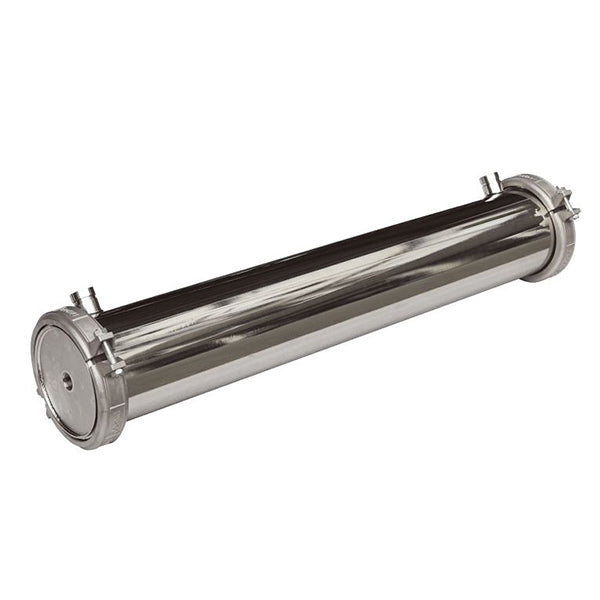As we all know, water treatment is a critical issue worldwide. As populations grow and resources dwindle, finding efficient, sustainable ways to treat water is more important than ever.
Reverse osmosis (RO) is a water treatment process that removes contaminants from water by using pressure to force water molecules through a semi-permeable membrane. RO is a popular choice for water treatment because it effectively removes a variety of contaminants, including dissolved salts, bacteria, parasites, and viruses.
RO membrane housings are the future of water treatment as they offer many advantages over traditional water treatment methods, including increased efficiency, lower costs and reduced environmental impact.
What is an RO Membrane Housing?
RO or reverse osmosis is a process used to remove contaminants from water. The RO membrane housing is the housing that contains the RO membrane. RO membrane is a thin film containing small pores. These pores allow water to pass through, but they are too small for contaminants to pass.
RO membrane housings are commonly used in water filtration systems. They are designed to remove contaminants from water such as bacteria, viruses and heavy metals. RO membrane housings can also be used to remove dissolved solids from water.
If you are looking for a way to remove contaminants from your water, RO membrane enclosures may be the perfect solution.

RO Membrane Housing vs. Traditional Water Treatment
RO membrane enclosures are a new technology that is gaining popularity in the water treatment industry. This type of enclosure is designed to provide a more efficient method of filtering water. Traditional water treatment methods use a series of filters to remove impurities from the water. However, RO membrane housings use a reverse osmosis process to remove impurities from the water.
There are several benefits to using RO membrane enclosures over traditional water treatment methods. The most significant benefit is that the RO membrane enclosure removes impurities from the water more efficiently. Additionally, RO membrane housings are less prone to clogging than traditional water treatment methods. Finally, RO membrane housings are more compact and require less space than traditional water treatment methods.
What are the benefits of RO Membrane Housing?
A reverse osmosis (RO) membrane housing is a filtration system commonly used in water purification and wastewater treatment. RO membrane enclosure systems are designed to remove impurities from water by using pressure to force water molecules through a semi-permeable membrane.
RO membrane enclosure systems are highly effective at removing a variety of impurities, including bacteria, viruses, and minerals. In addition, RO membrane enclosure systems are relatively low maintenance and have a long service life. As such, RO membrane enclosure systems are commonly used in a variety of industries, including food and beverage, pharmaceutical, and power generation.
How does RO Membrane Housing work?
Reverse osmosis (RO) is a water purification technology that uses semi-permeable membranes to remove ions, molecules and larger particles from drinking water. In reverse osmosis, external pressure is used to force water molecules through a semipermeable membrane. The pores in the membrane are small enough to allow water molecules to pass through, but they are too small to allow most dissolved ions and other impurities to pass through. As a result, impurities are removed from the water and washed away, leaving clean filtered water on the other side of the membrane.
RO membrane housing is the term used to describe the housing that contains a semipermeable membrane in a reverse osmosis process. Housings are usually made of stainless steel or other types of corrosion-resistant materials.
How can I get started with RO Membrane Housing?
There are many types of RO (reverse osmosis) membrane housings on the market. Each type has its own advantages and disadvantages, so it's important to choose the right type for your specific needs. Below is a brief overview of the most common types of RO membrane housings:
Single-stage housing
Single-stage housing is the most basic and economical choice. They are typically used in light duty applications such as residential drinking water systems.
Two-stage shell
The two-stage shell is more durable and can withstand higher pressure. They are commonly used in commercial and industrial applications.
Multistage housing
Multistage housings are the heaviest and can be used in high pressure applications. They are typically used in large water treatment plants, ultra-high pressure applications or when filter elements must be changed without interrupting the process flow.
Conclusion
Water treatment is a critical process in today's world. Reverse osmosis membrane housings are a promising new technology with many advantages over traditional methods. It is more effective, more durable, and more effective at removing impurities. Due to these advantages, RO membrane enclosures are likely to become the new standard in water treatment.

